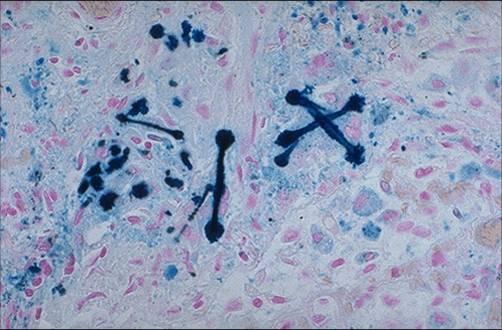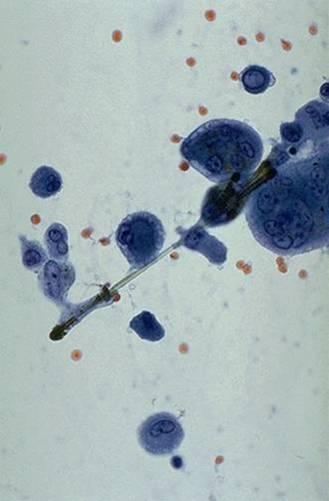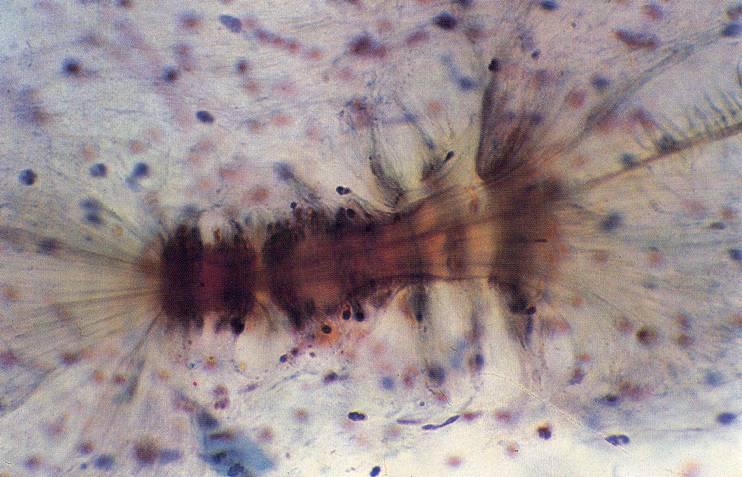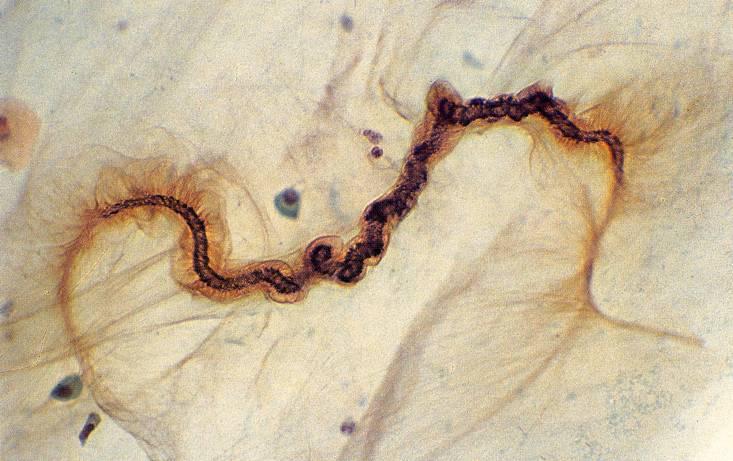This content is also available in:
Español
Čeština
Magyar
Polski
Türkçe
Non-cellular findings in respiratory material include those produced by the host, inhaled, formed as response to foreign material and introduced as laboratory contaminants.
Curschmann`s spirals are coiled strand of mucus. On Papanicolaou stains, they appear as purple helices. They are a non-specific finding associated with chronic respiratory disorders.
Ferruginous bodies are mineral fibers (such as asbestos) encrusted by ferroproteins. They are dumbbell-shaped, from 5 to 200 µm in length, and stain golden yellow to black with Papanicolaou stains. Patients with a history of asbestos exposure, which is associated with mesothelioma and bronchogenic carcinoma, have a high number of ferruginous bodies in BAL fluid.
Charcot-Leyden crystals are rhomboid shaped, orangiophilic structures deriving from degenerated eosinophils in patients with severe allergic disorders such as asthma.
Psammoma bodies are concentrically laminated calcifications which can be observed both in malignancies, usually with a papillary architecture (such as pulmonary adenocarcinoma, mesothelioma, metastatic thyroid or ovarian cancer), and in benign conditions, such as tubercolosis. Corpora amylacea are non-calcified proteinaceous concretions, occasionally observed in older individuals. Amorphous protein may be a clue to the diagnosis of amyloidosis or alveolar proteinosis.
Specimen contaminants include vegetable matter, pollen and the pigmented fungus Alternaria.





